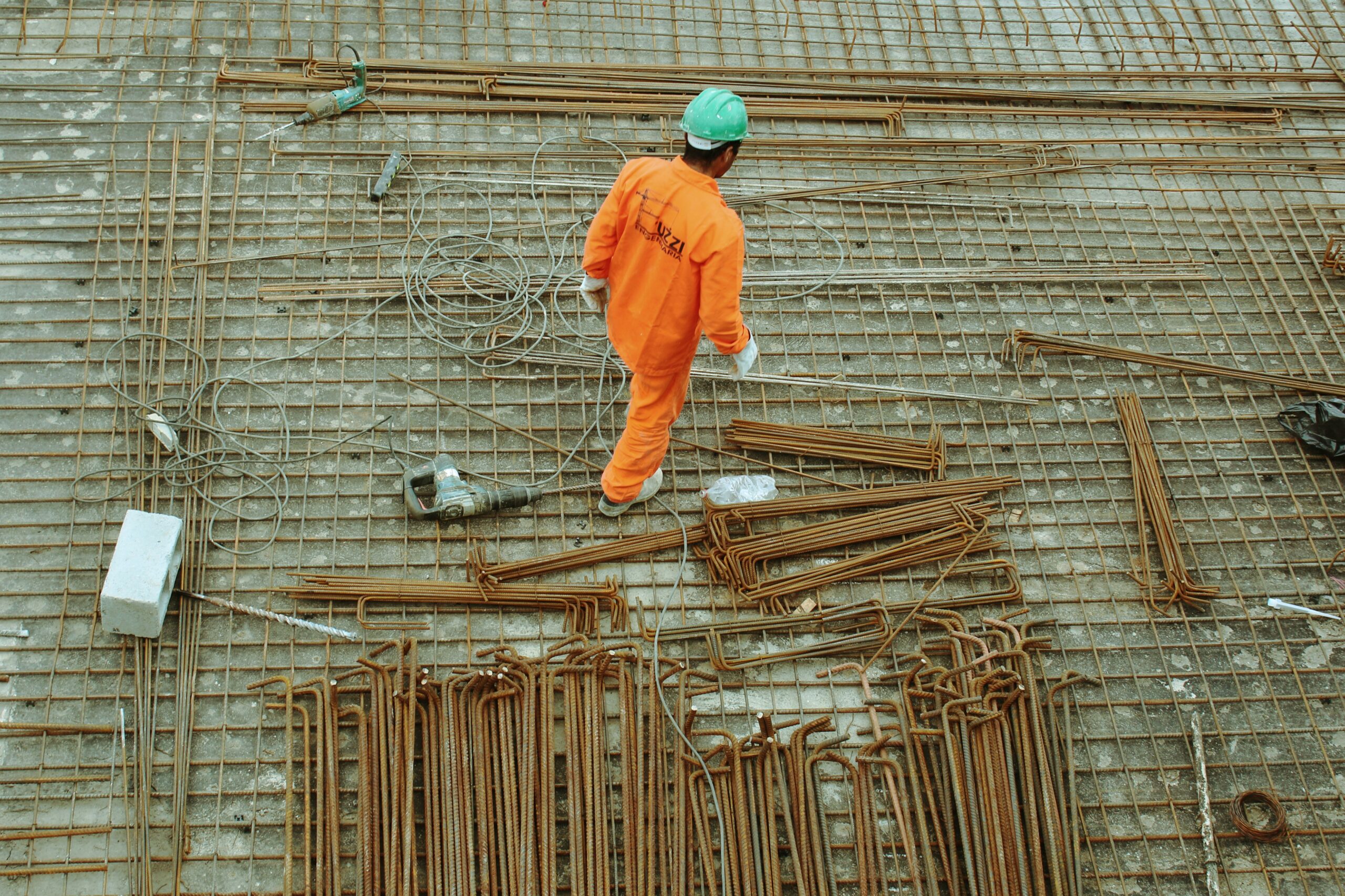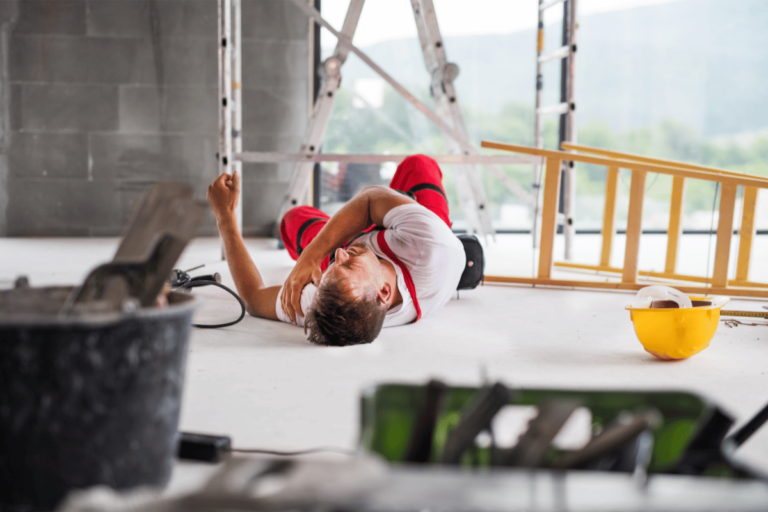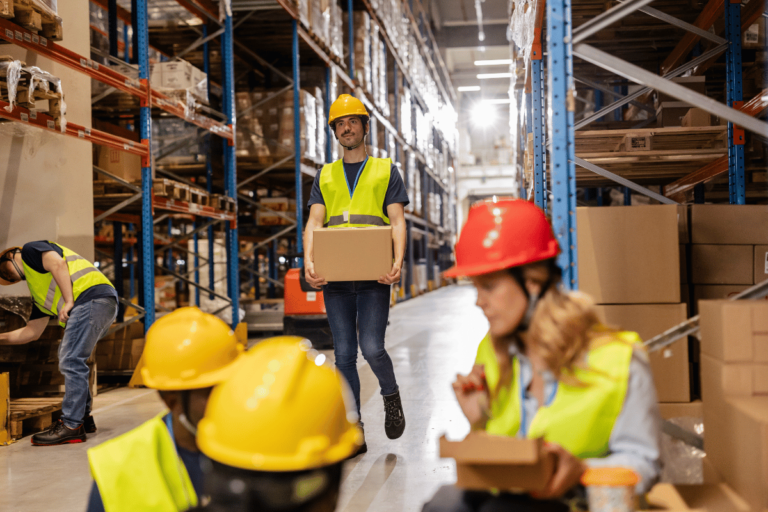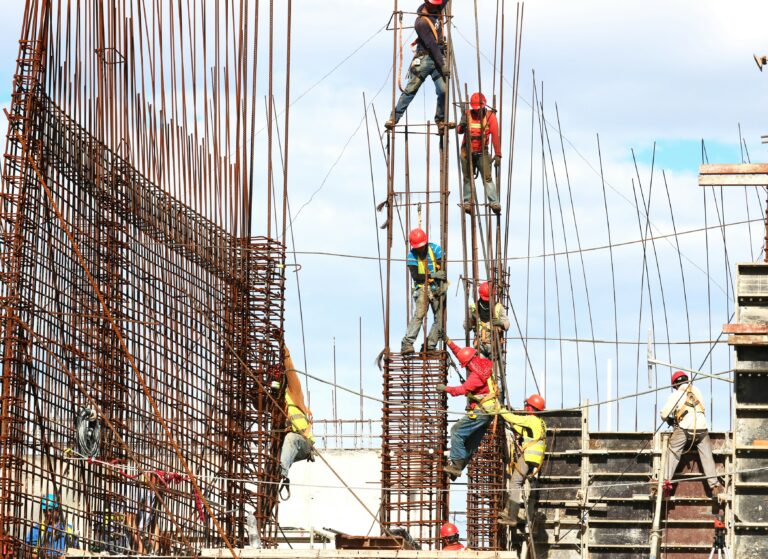Fortify Your Foundation: Vital Construction Site Safety Tips
Why Construction Site Safety Matters
Keeping construction sites safe is essential for keeping workers healthy and productive. When safety measures are in place, the work environment becomes less risky and tasks get done more efficiently.
Looking Out for Workers
Construction workers need to know they’re protected. Proper construction safety training gives them the skills to spot dangers and act fast. When workers feel safe, they’re happier and work better, which helps projects succeed.
Numbers tell a clear story about why worker safety is so important. Falls are the top cause of deaths among construction workers, making safety steps a must. In 2022, falls made up more than a third of jobsite fatalities. Using things like guardrails and scaffolding can make a big difference in preventing injuries (Procore).
| Hazard Type | Percentage of Fatalities |
|---|---|
| Falls | 33% |
| Other Accidental Injuries | 25% |
| Electrocutions | 10% |
| Struck-By Accidents | 10% |
Stopping Accidents Before They Happen
Keeping accidents at bay on construction sites not only keeps workers safe but also cuts down on costs for employers. Spotting and dealing with common hazards means creating a safer place to work.
A solid construction safety checklist is a good start. This checklist helps check equipment, keep tools in good shape, and spot dangers before they cause problems. Taking steps before something happens can drop accident rates and save money on insurance and lawsuits.
Sticking to safety rules also helps avoid legal trouble. Employers need to follow both federal and state rules and make safety a habit for everyone. Organizations like OSHA give out guidelines that make worksites safer when followed (Safety Evolution).
When construction pros make safety a top priority, they make sure everyone gets home safe every day.
Construction Site Dangers: The Risks You Need to Know
Keeping workers safe while building homes, offices, and infrastructures is crucial. Here are some of the biggest hazards folks on construction sites face daily.
Falling Off Heights
Falls are the number one cause of death in construction. More than one in three fatal accidents on sites are due to falls, so taking safety seriously here is non-negotiable. We’re talking about things like guardrails, screens, nets, and scaffold for construction – they’re life-savers.
| Fall Protection | Guidelines |
|---|---|
| Guardrails | Needed if you’re working 6 feet or higher |
| Safety Nets | Must be up in risky areas |
| Personal Fall Arrest Systems | Use them when you’re way up high |
OSHA says if you’re working above six feet, you better have protective gear like guardrails or fall arrest systems (University of Minnesota College of Continuing & Professional Studies).
Getting Zapped: Electrocution
Getting electrocuted is a major concern on construction sites, mainly due to powered tools and electrical lines. Electricians face this risk the most, making up about 32% of these fatalities. The solution? Always wear safety gear, keep a safe distance from power lines, and make sure the power is off before any maintenance.
| Safety Measure | What to Do |
|---|---|
| PPE (Personal Protective Equipment) | Insulated gloves and shoes are a must |
| Maintenance | Keep your tools in top shape |
| Attention | Stay aware of electrical dangers |
Watch Out: Struck-by Incidents
Struck-by accidents are no joke, causing 150 deaths and about 14,000 injuries in just one year. Mostly, these accidents happen around heavy duty gear like trucks and cranes. Securing loads and warning folks nearby can save lives, along with wearing the right safety gear.
| Struck-by Stats | Numbers |
|---|---|
| Deaths | 150 in 2020 |
| Injuries | 14,000 in 2020 |
Breathing Troubles: Respiratory Hazards
Breathing in dust, fumes, and chemicals can mess up your health big time. Making sure the place is well-ventilated and wearing protective masks helps keep those lungs clean and healthy.
| Respiratory Safety Measures | Why It Matters |
|---|---|
| Ventilation | Cuts down exposure to bad stuff |
| Respirators | Keep dust and pollutants out of your system |
Following these tips can cut down on accidents and protect workers in the field. For more on staying safe, check out our guides on construction safety gear, training, and our comprehensive safety checklist. Keep those hard hats on, folks!
Implementing Safety Training Programs
Keeping a construction site safe isn’t just about hard hats and steel-toed boots. It’s about well thought-out safety training programs that make sure everyone goes home in one piece. Let’s break down what makes these programs tick and how to nail them down.
The Basics
A solid safety training program has a few key parts:
| What You Need | What It Does |
|---|---|
| Spotting Hazards | Teach folks to see danger before it sees them. Think falls, live wires, and heavy gear in the wrong place. |
| Real-World Drills | Get hands-on. Let workers practice safety moves in real scenarios. It’s like a dress rehearsal for safety. |
| Keeping it Fresh | Update your training. New rules and new gear mean old lessons need a refresh. Keep it relevant. |
| Testing the Troops | Put them to the test. Regular checks with quizzes and real-world drills keep folks on their toes and prove the training works. |
According to Safety Evolution, these elements build a strong safety net for workers, helping them stay sharp and ready for anything.
Planning It Out
Getting a safety training program off the ground takes some smart strategies. Here’s how you do it right:
- Keep It Real: Tailor the training to fit the job. Construction isn’t one-size-fits-all, and neither is safety.
- Practice, Practice, Practice: Let workers drill their skills where it counts– on the job, but safely.
- Write It Down: Track everything. Who was there, what was covered, and how they did. Documentation is your buddy.
- Monitor the Crew: Keep tabs on how well everyone’s keeping up with safety measures.
- Team In: Let workers give input. They’re the ones on the front lines, after all.
- Constant Check-ins: Regularly update and tweak the program based on feedback and new safety insights.
Using these tips not only helps keep everyone safe but also keeps you in good standing with OSHA. They’re the safety rulebook writers, and likes it when you’re playing their game. For more tips, check out our construction safety training resources and don’t miss the construction safety checklist we’ve got for the pros.
Stay safe out there!
Playing by the Safety Rules: Keeping Your Construction Site Secure
Playing by the safety rules isn’t just about avoiding trouble—it’s key to keeping everyone on the construction site safe.
Following the Rulebook
No one likes bogging down in rules, right? But when it comes to safety, rules from folks like OSHA (Occupational Safety and Health Administration) are life-savers. Think of them as your playbook for keeping the job site safe and sound. Their rules cover everything from how to use gear to when to strap on that hard hat.
Take working way up high. Anything over six feet needs fall protection. Could be guardrails, safety nets, or personal fall arrest gear (University of Minnesota). And it’s not just about having the gear—it’s about understanding how to use it right.
| Rule | What’s It About? |
|---|---|
| Fall Protection | Needed when working over 6 feet high |
| PPE Use | Required where there’s danger |
| Safety Training | Everyone needs it |
Dodging Legal Trouble
Stick to the safety rules and you’re not just keeping folks safe; you’re keeping the lawyers at bay too. Ignoring OSHA guidelines can mean big fines and lawsuits—not to mention, it can trash your company’s name.
Safety training is an ace up your sleeve here. Train your crew well, and you’re less likely to see accidents. Less drama, less risk (Safety Evolution).
Get this: Between 2020 and 2021, fatalities in construction went up by almost 6%. Sobering stuff. Making sure everyone knows and follows the safety rules can help keep those numbers down. Understanding your role in all this isn’t just good sense—it’s essential.
So if you want a safer site, grab that construction safety checklist and invest in solid construction safety training. You’ll build a safety-first culture that meets every regulation and keeps everyone on their game.
Keeping Construction Workers Safe
How do you avoid accidents on construction sites? It’s simple really, safety first! Let’s break down some common sense tips to keep everyone in one piece.
Look After Your Tools and Equipment
Let’s talk tools. If they ain’t working right, you’re asking for trouble. Keep ’em in top shape. Check them out often and fix them up when needed. Some regular TLC can mean fewer accidents and better efficiency. Here’s a quick guide:
| Tool/Equipment | Check-Up Schedule | What to Look For |
|---|---|---|
| Power Tools | Every week | Frayed cords, safety guards in place |
| Hand Tools | Every month | Cracks, rust, worn edges |
| Heavy Machinery | Daily | Fluids, brakes, safety features |
Stick to OSHA Rules
OSHA rules aren’t just suggestions—they’re the law. These guidelines aim to keep workers safe and healthy. Make sure everyone’s trained, geared up with personal protective equipment (PPE), and knows the rules, especially when they’re high up—anything over 6 feet can be dangerous.
Keep safety training regular and up-to-date. A well-prepared workforce can save lives. A handy checklist can help track who’s following the rules and who isn’t.
Speak Up About Safety Hazards
No one should be scared to report something unsafe. Speak up and make sure everyone knows it’s safe to do so. A solid reporting system can nip problems in the bud, and here’s how you can set it up:
- Have safety officers ready to respond
- Allow anonymous reports for those shy about speaking up
- Hold regular meetings to talk about safety issues and fixes
By creating a culture where safety concerns are aired out openly, you’ll keep the site safer. And don’t forget, gear up the workers with proper construction safety equipment to prevent injuries.
Stick to these basics, and you’ll help keep everyone on the job site safe. Safety shouldn’t be complicated—just make it a habit.
Must-Have Safety Gear for Construction Workers
Working construction ain’t all about hammering nails and pouring concrete—safety comes first. Here’s a rundown of the must-have safety gear that’ll keep you and your crew protected on the job.
Gear That Shields You from Harm
Personal Protective Equipment (or PPE, if you’re into acronyms) is your frontline defense against injuries. With construction ranking high on the risk scale—where 19.25% of work-related fatalities happen—you can see why gear is non-negotiable. Bosses need to make sure their team not only gets the right gear but also knows how to use it properly.
| Safety Gear | What It Does |
|---|---|
| Helmets | Keep noggins safe from falling debris, bumps, and electric shocks |
| Gloves | Shield hands from cuts, scrapes, and nasty chemicals |
| Steel-Toe Boots | Guard feet against heavy stuff and sharp objects |
| Bright Vests | Make sure drivers and machine operators can spot you |
Protecting Your Head
A good helmet can be a life-saver—no joke. Hard hats are a must for protecting against flying screws or accidental hammer whacks. But remember, a helmet that doesn’t fit right is as bad as no helmet at all. Too tight and you’ll be distracted by headaches, too loose and you’ve got yourself a false sense of security.
Keeping Your Eyes and Face Safe
Ever had dust or grit in your eyes? Now, imagine that times a hundred with chunks of debris flying around. That’s why safety glasses or goggles are a big deal. Sometimes, you might need a face shield for extra protection—especially when dealing with gnarly chemicals or splashing fluids.
And it’s not just about wearing the stuff. If there’s an emergency, everyone needs to know how to alert the team. Horns, alarms, and even tried-and-true shouting can save lives. Training your crew on quick-response communication is crucial.
Staying Grounded: Fall Protection
Falls are no joke. They’re the top cause of deaths on construction sites. Good news: using the right fall protection systems—like guardrails or fall arrest gear—can cut down on these incidents. Any gap or skylight over six feet high needs to have some form of protection.
Making sure you and your team are decked out in the right gear isn’t just good practice—it’s a life-saver. For more info on keeping your job site safe, check out our pages on construction safety training and safety equipment.
So suit up, stay safe, and keep building.







